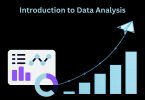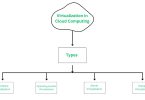Introduction:
The world of agriculture is undergoing a significant transformation driven by technological advances, and one of the most powerful innovations is the integration of artificial intelligence (AI) into modern farming practices. AI-powered automation of agriculture has revolutionized the way we produce food, manage crops and optimize resources. This article explores the key role of artificial intelligence in modern agriculture, its benefits, applications and the future it promises.
The evolution of farming with artificial intelligence:
Traditional farming methods often rely on manual labor and experience-based decision-making. However, these methods can be laborious, prone to human error, and less effective in addressing the challenges posed by a growing global population and climate change. This is where AI-powered agricultural automation comes into play. By leveraging AI technologies such as machine learning, computer vision and data analytics, farmers can make informed decisions that lead to higher yields, reduced waste and more sustainable practices.
AI applications in agriculture:
- Precision farming: AI enables farmers to collect data from various sources such as satellite imagery, drones and field sensors. This data is then analyzed to provide insight into soil health, moisture levels and pest infestation. Armed with this information, farmers can apply fertilizers, water and pesticides exactly where and when they are needed, optimizing resource use and minimizing environmental impact.
- Crop monitoring and management: With the help of artificial intelligence imaging systems, farmers can monitor crop health and growth in real time. Computer vision algorithms can detect early signs of disease, nutrient deficiencies or stress, enabling early intervention. This proactive approach can prevent the spread of disease and increase overall crop productivity.
- Autonomous agricultural equipment: Autonomous vehicles and AI-controlled robots are transforming labor-intensive tasks such as planting, harvesting and weeding. These machines use AI algorithms to navigate fields, identify crops and perform tasks with precision. This not only reduces the physical burden on farmers but also increases operational efficiency.
Advantages of agricultural automation:
Integrating artificial intelligence into agriculture brings a number of benefits that go beyond simply increasing productivity.
Resource efficiency:
Artificial intelligence systems optimize the use of resources such as water, fertilizers and pesticides. This not only reduces input costs for farmers, but also minimizes the environmental impact associated with overuse.
Higher yields:
With accurate monitoring and targeted interventions, crop yields can be significantly improved. Artificial intelligence helps farmers identify and solve problems before they escalate, leading to healthier and more productive crops.
Labor savings:
Automation reduces the need for manual labor for repetitive tasks. This is particularly important in regions facing labor shortages or where the workforce is increasingly aging.
Sustainability:
Precision agriculture with artificial intelligence promotes sustainable practices by reducing the use of chemicals, preventing soil degradation and conserving water resources.
Challenges and future directions:
While the potential of AI in agriculture is huge, there are challenges that need to be addressed. One of the main obstacles is the digital divide, where smallholder farmers in developing regions may not have access to the technology and training needed to implement AI solutions. In addition, privacy and security issues need to be carefully managed as agricultural data is sensitive and valuable.
The future of agricultural automation is promising. AI algorithms will become even more sophisticated and able to handle complex tasks such as predicting disease outbreaks with greater accuracy and optimizing multi-crop systems. Collaboration between AI experts, agricultural scientists and farmers will be key in developing solutions that meet specific regional needs and challenges.
Conclusion:
Artificial intelligence-enabled agricultural automation is ushering in a new era of agriculture that is more efficient, sustainable and productive. By harnessing the power of artificial intelligence to monitor crops, manage resources and make informed decisions, farmers can manage the challenges of a rapidly changing world while contributing to global food security. As technology continues to advance, the synergy between artificial intelligence and agriculture promises a better future for both farmers and consumers.






Leave a Comment